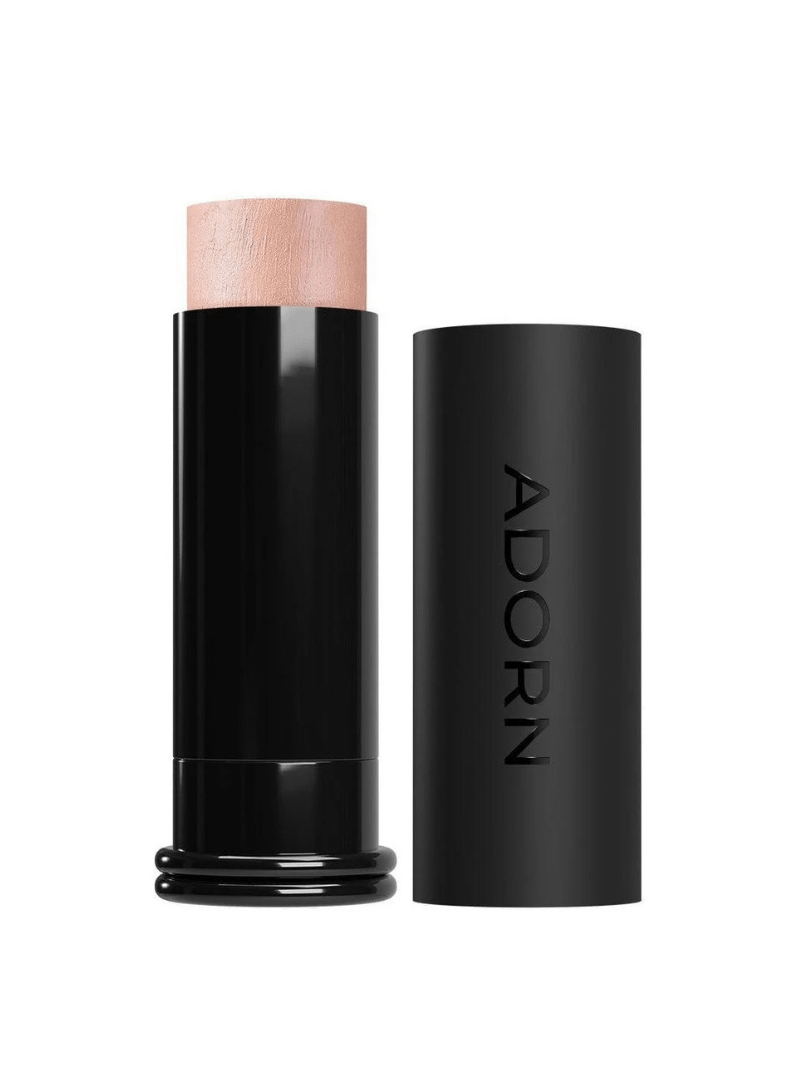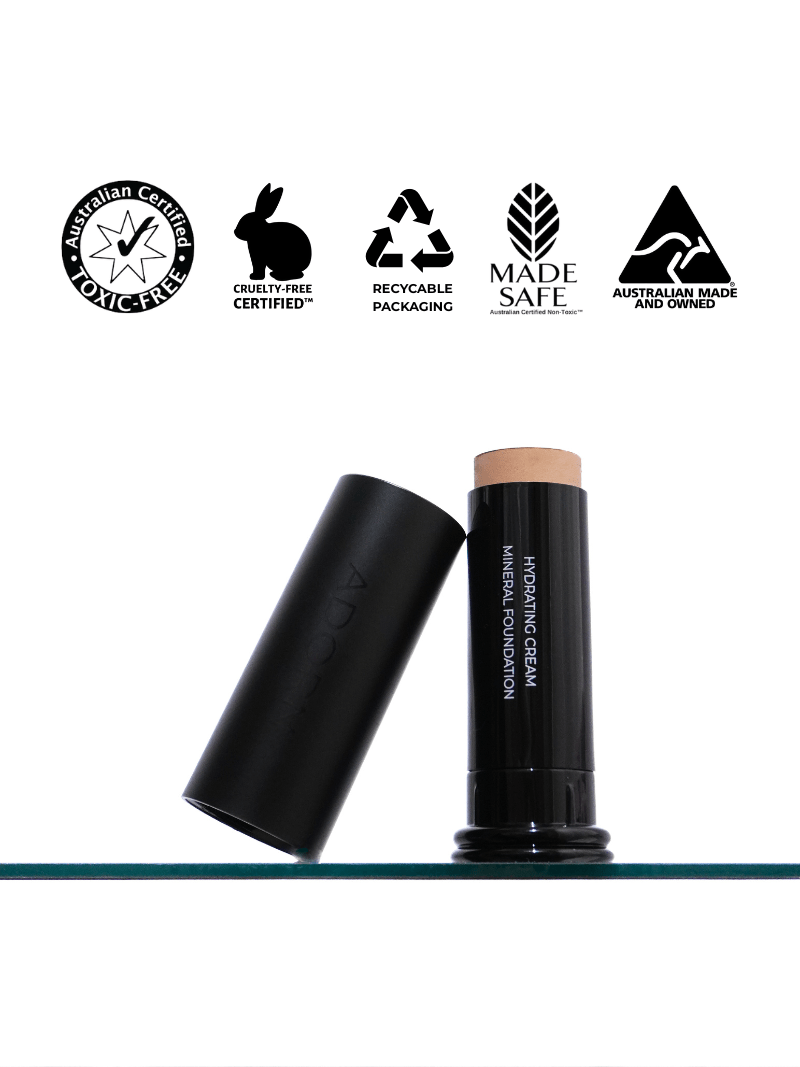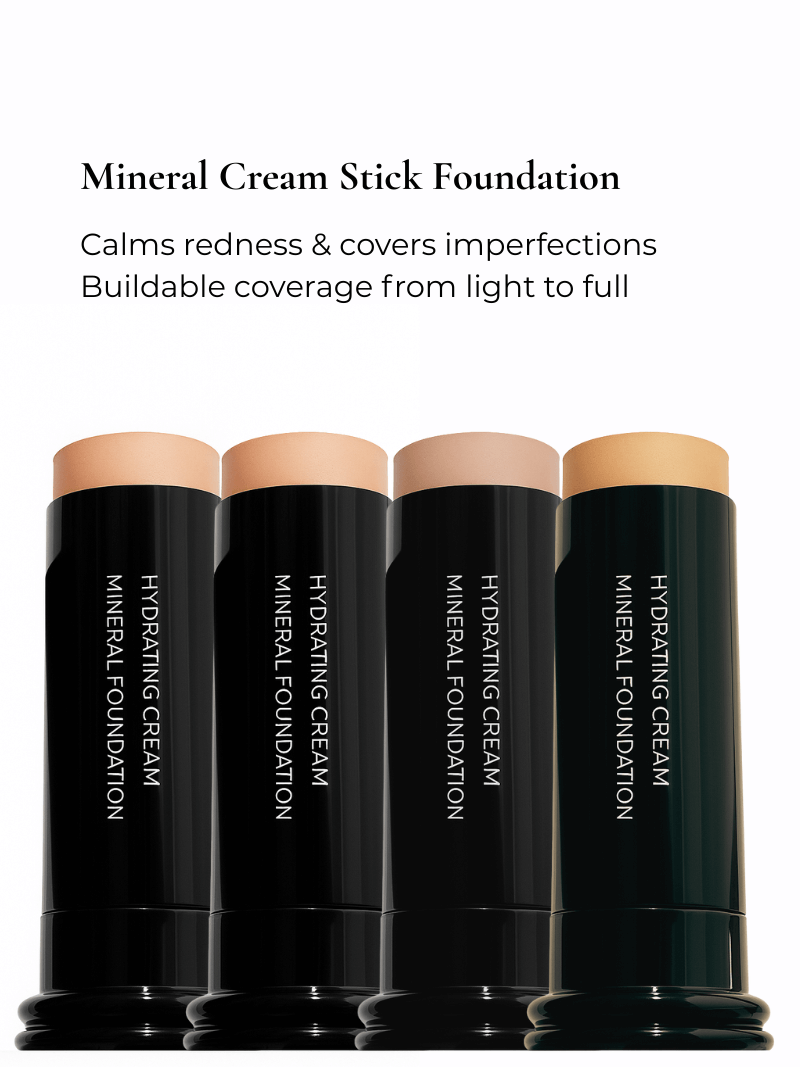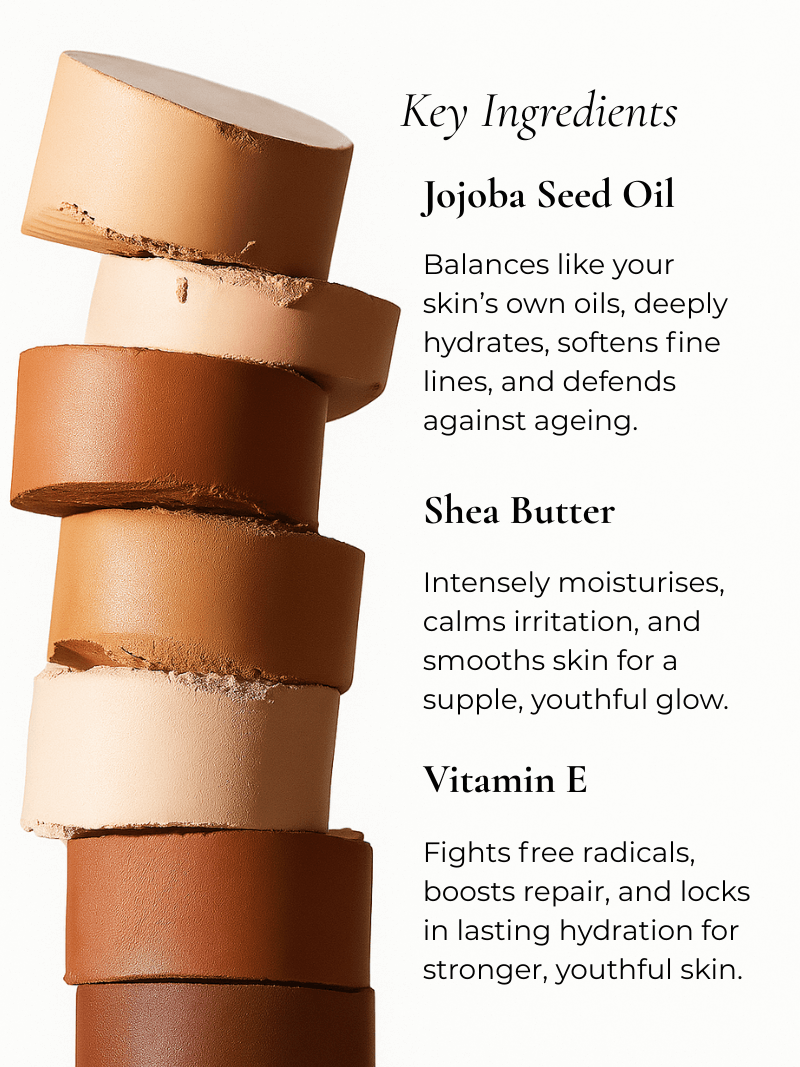Caprylic/Capric Triglyceride, Hydrogenated Polyisobutene, Corn Starch Modified, Simmondsia Chinensis (Jojoba) Seed Oil, Kaolin, Euphorbia Cerifera (Candelilla) Wax, Copernicia Cerifera (Carnauba) Wax, Butyrospermum Parkii (Shea Butter) Fruit, Polyglyceryl-4 Oleate, Caprylhydroxamic Acid (and) Caprylyl Glycol (and) Glycerin, Tocopherol (Natural Vitamin E). May contain (+/-) Mica (CI 77019), Zinc Oxide (CI 77947), Titanium Dioxide (CI 77891), Iron Oxides (CI 77491, CI 77492, CI 77499), Ultramarines (CI 77007), Tin Dioxide (CI 778161)
Contains Organic Ingredients
*The term "may contain + - " on cosmetic ingredient labels refers to the differing levels of that ingredient required to create the various shades.
Is Caprylic/Capric Triglyceride comedogenic or will it clog my pores? AND, what is it?
Caprylic/Capric Triglycerides is a mixed triester derived from coconut oil mainly used as an emollient, dispersing agent, and solvent. As an emollient, it both quickly penetrates the surface to condition the skin and provides a lightweight and non-greasy barrier of lubrication.
Comedogenic ingredients tend to be fatty emollients (but not all fats). Comedogenicity is complex. In fact, avoiding particular ingredients in isolation isn’t helpful because what really matters is the comedogenicity of the final product.
The degree of comedogenicity is determined by the quantity of the ingredient in question, the length of time it sits on the skin, where on the face or body it is applied, whether there are other comedogenic ingredients in the product, and individual skin chemistry. In fact, comedogenicity is highly variable across people due to differences in a person’s skin enzymes. This means that an ingredient may be highly comedogenic for one person, but not at all for another.

















































































































